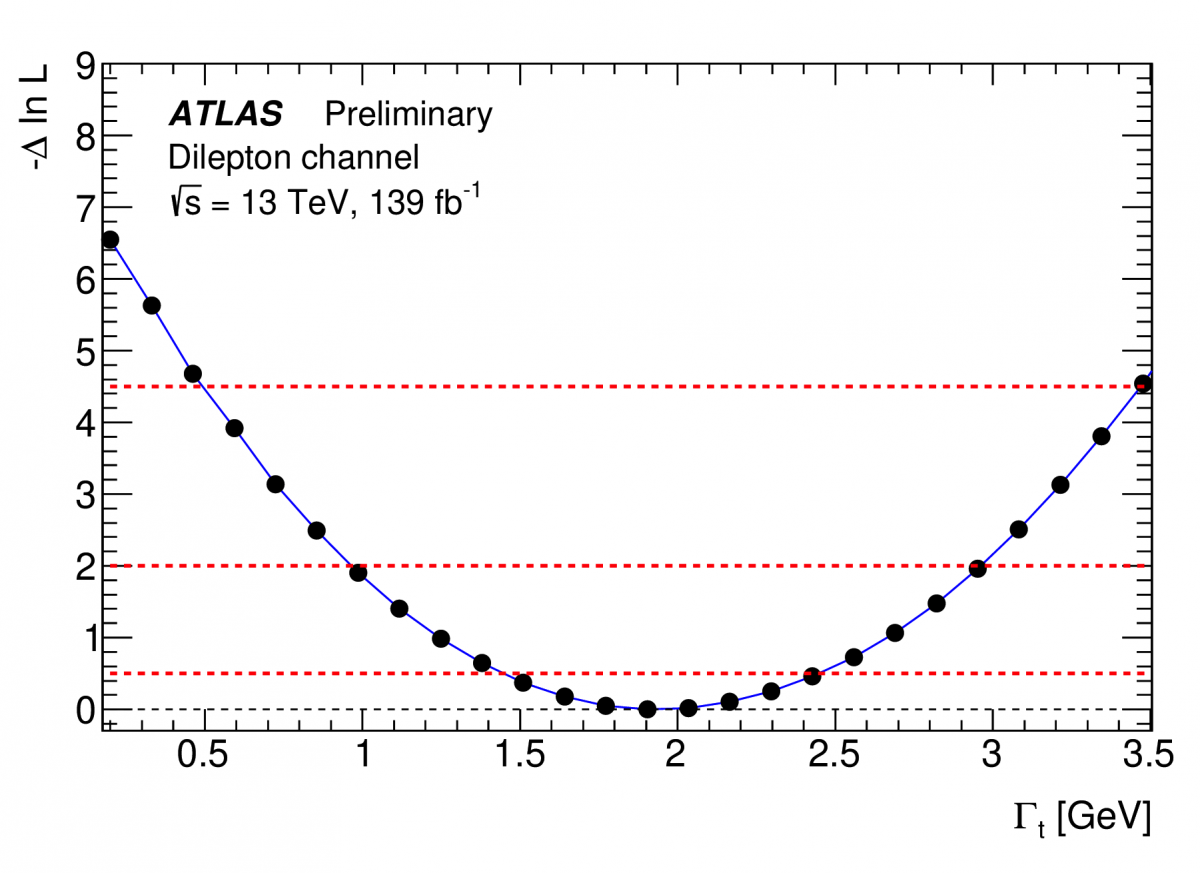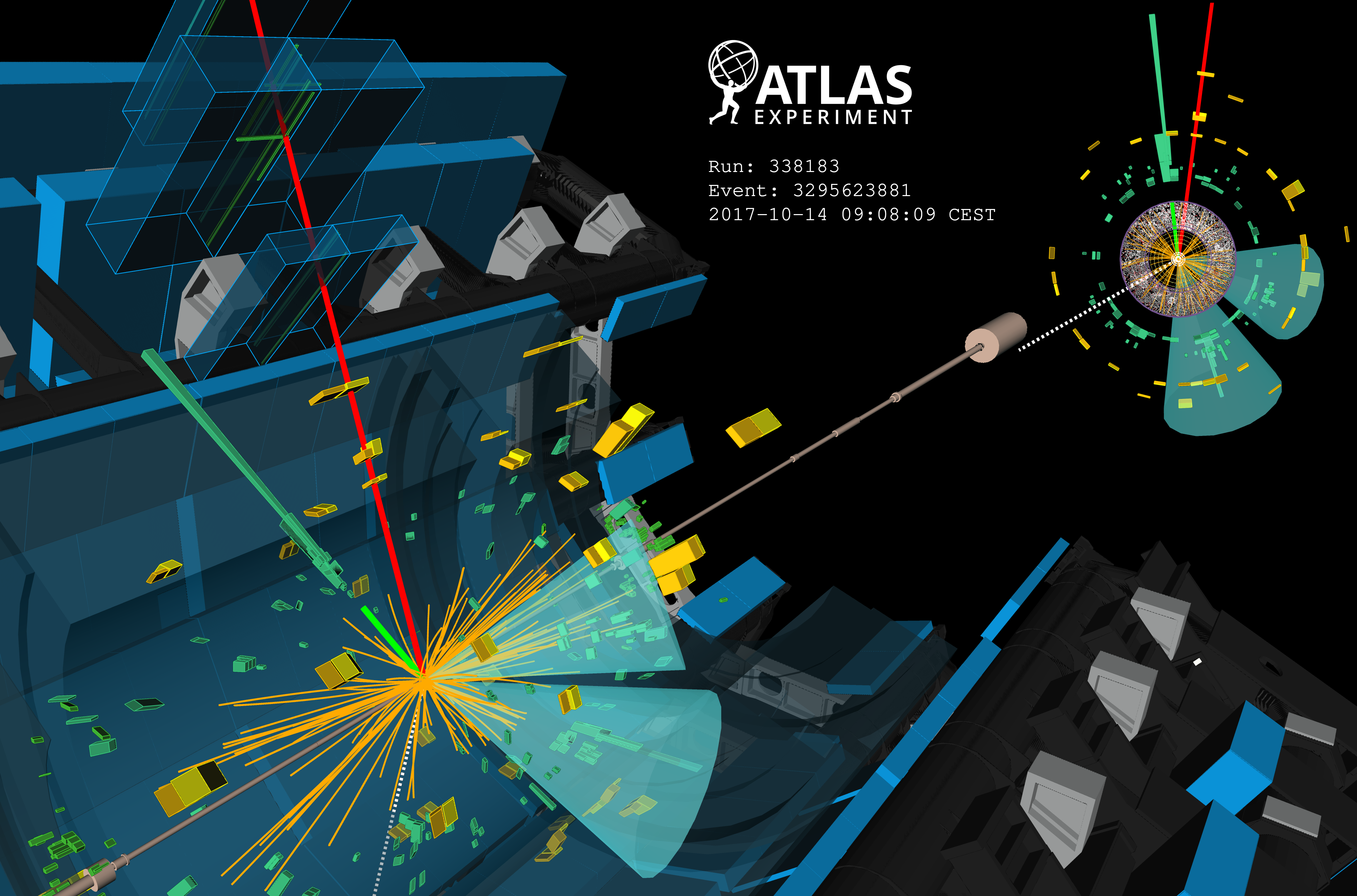ATLAS delivers new direct measurement of the top-quark decay width with improved precision
6 August 2019 | By

As the heaviest known particle, the top quark plays a key role in studies of fundamental interactions. Due to its short lifetime, the top quark decays before it can turn into a hadron. Thus, its properties are preserved and transferred to its decay products, which can in turn be measured in high-energy physics experiments. Such studies provide an excellent testing ground for the Standard Model and may provide clues for new physics.
A key parameter examined by the ATLAS Collaboration is the top quark’s “decay width”, which is related to the particle’s lifetime and decay modes. Decays resulting from new physics might alter the decay width, making its precise measurement particularly important. In the Standard Model, theoretical calculations predict a value for the decay width of 1.32 GeV for a top-quark mass of 172.5 GeV.
The ATLAS Collaboration presented a new measurement of the top-quark decay width at the Lepton Photon Symposium in Toronto, Canada. The analysis makes use of the full LHC Run 2 dataset, with a corresponding integrated luminosity of 139 fb−1, to provide ATLAS’ best precision yet.
The new analysis takes a direct approach to the measurement of the top-quark decay width. ATLAS physicists selected collision events where top-quark pairs decay into two charged leptons (electrons or muons) of opposite electric charge. This decay channel has a higher purity of signal events and smaller systematic uncertainties compared to alternative channels. ATLAS measured the invariant mass of the leptons and the resulting “b-jets” from top-quark decays observed in the detector, to determine the top-quark decay width.
The new analysis takes a direct approach to the measurement of the top-quark decay width, to provide ATLAS’ best precision yet.

The invariant mass of the lepton and a b-jet (mlb) is sensitive to the top-quark decay width, but only when both originate from the decay of the same top quark. Physicists used a simple criterion, looking at the minimum angular distance between the charged lepton and the jet, in order to match them to each other and reconstruct their invariant masses.
The new measurement of the top-quark decay width is dominated by systematic uncertainties arising mainly from the measurement of jet energies. To cope with these uncertainties, ATLAS physicists employed a novel approach to the fit that combined templates, representing different values of the decay width, and a profile-likelihood technique, where the sources of systematic uncertainties directly enter the fit. Physicists tested the fitting procedure to ensure the fit stability and robustness to statistical effects. Indeed, tests with a full systematic model were conducted to verify that the procedure could reproduce the decay width predicted by the Standard Model, as well as any possible deviations. This newly developed technique, combining template and profile-likelihood fits, may find use in other measurements outside of top quark physics.
The new ATLAS result gives a value of the top-quark decay width of 1.9 ± 0.5 GeV, in agreement with the Standard Model. This marks a significant improvement in precision when compared to previous measurements analysing 8 TeV LHC data.
Links
- Measurement of the top-quark decay width in top-quark pair events in the dilepton channel at 13 TeV with the ATLAS detector (ATLAS-CONF-2019-038)
- Direct top-quark decay width measurement in the tt lepton+jets channel at 8 TeV with the ATLAS experiment (Eur. Phys. J. C 78 (2018) 129, see figures)
- Lepton Photon 2019 plenary presentation: Overview of the ATLAS Experiment by Pierre Savard
- Lepton Photon 2019 parallel presentation: Direct top-quark decay width measurement at 13 TeV with the ATLAS experiment by Tomas Dado
- See also the full lists of ATLAS Conference Notes and ATLAS Physics Papers.



